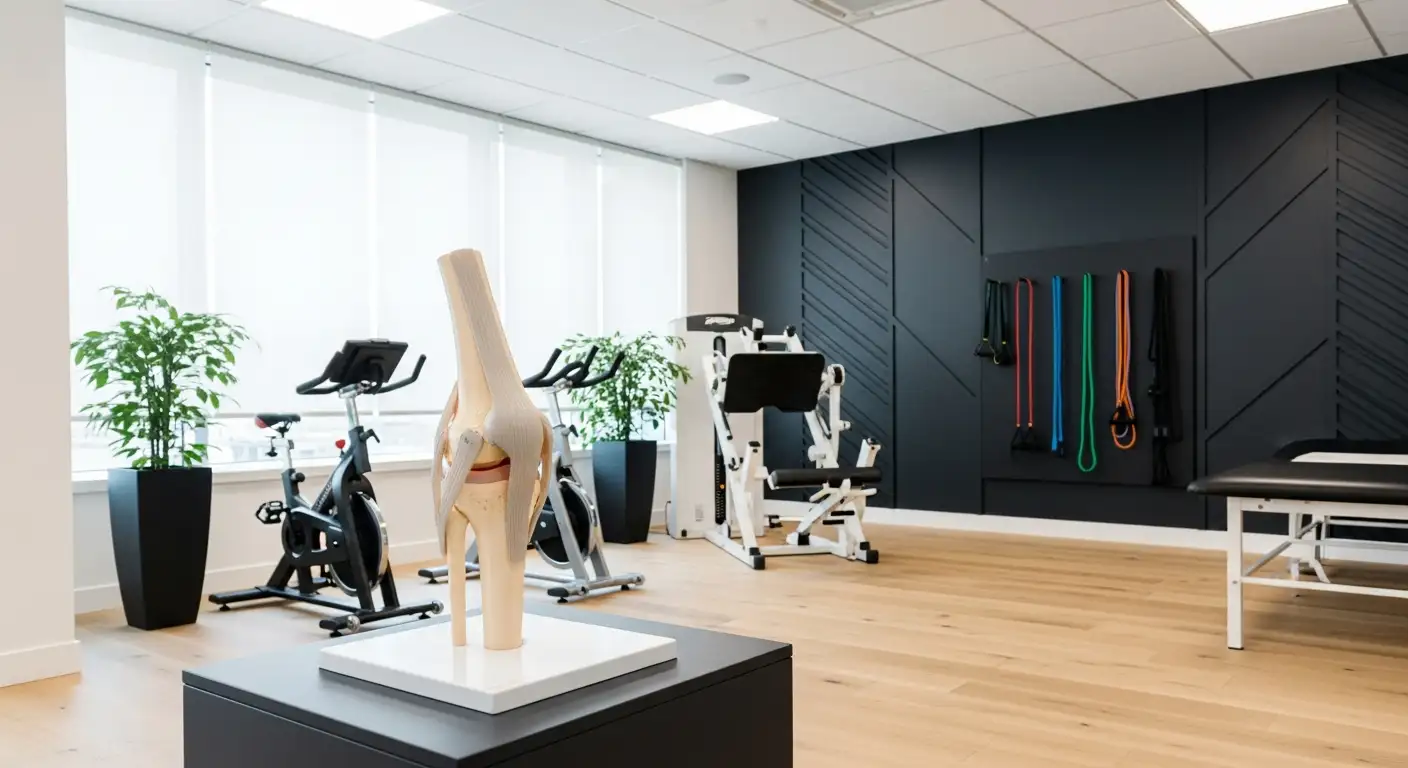Understanding Knee Pain When Bending
Knee pain when bending can be a frustrating and debilitating experience. It is important to understand the underlying causes in order to effectively manage and alleviate the pain. This section provides an overview of knee pain when bending and explores some common causes.
Overview of Knee Pain When Bending
Knee pain when bending refers to discomfort or pain experienced in the knee joint when flexing or bending the knee. It can range from mild discomfort to severe pain, depending on the underlying cause. The pain may be localized to a specific area or may radiate throughout the knee joint.

Knee pain when bending can significantly impact daily activities such as walking, climbing stairs, or even sitting down and standing up. It can affect individuals of all ages and can be caused by various factors, including injuries, medical conditions, and lifestyle factors.
Common Causes of Knee Pain When Bending
Several factors can contribute to knee pain when bending. Understanding these common causes is essential for accurate diagnosis and appropriate treatment. The following are some of the most frequently encountered causes:
It's important to note that poor posture can also contribute to knee pain when bending. Poor posture puts strain on the muscles and ligaments around the knee joint, leading to discomfort and pain.
By understanding the common causes of knee pain when bending, individuals can seek appropriate medical advice and adopt effective strategies to manage and alleviate their discomfort. Consulting with a healthcare professional is recommended for a proper diagnosis and personalized treatment plan.
Factors Contributing to Knee Pain When Bending
Knee pain when bending can have various underlying factors that contribute to its occurrence. Understanding these factors can help identify the root cause of the pain and guide appropriate management strategies. Several common factors associated with knee pain when bending include weight, osteoarthritis, previous knee injuries, and occupation.
Weight and Knee Pain
Being overweight or obese can increase the risk of developing knee pain when bending. Excess weight puts additional pressure on the knee joints, leading to increased stress and strain. This can exacerbate existing knee conditions and contribute to the development of new ones.
Losing weight and maintaining a healthy body weight can help alleviate knee pain when bending. By reducing the load on the knee joints, weight loss can help decrease pain and improve overall knee function [1].
Osteoarthritis and Knee Pain
Osteoarthritis is a common cause of knee pain when bending. This condition occurs when the protective cartilage within the joints gradually wears down over time. As a result, the bones may rub against each other, leading to pain, stiffness, and discomfort.
Managing osteoarthritis-related knee pain when bending often involves a combination of treatments such as physical therapy, pain medications, and lifestyle modifications. In severe cases, surgical intervention may be necessary.
Previous Knee Injuries and Knee Pain
Previous knee injuries can also contribute to knee pain when bending. Injuries such as ligament tears, meniscus tears, or fractures can lead to long-term knee pain and instability. The residual effects of these injuries can make bending the knee uncomfortable or painful.
If you have experienced a previous knee injury, it is essential to seek appropriate medical evaluation and follow recommended rehabilitation protocols to minimize the risk of long-term knee pain when bending.
Occupation and Knee Pain
Certain occupations that involve repetitive knee movements or prolonged periods of kneeling can contribute to knee pain when bending. Jobs such as construction work, flooring installation, or gardening can put excessive stress on the knee joints, leading to discomfort and pain.
If your occupation involves repetitive knee movements, it is important to take regular breaks, use proper knee protection, and practice good body mechanics to minimize the risk of developing knee pain when bending.
By understanding the factors that contribute to knee pain when bending, individuals experiencing this discomfort can take proactive steps to manage and prevent further pain. This may include weight management, seeking appropriate medical care for underlying conditions like osteoarthritis or previous knee injuries, and implementing ergonomic practices in occupational settings. Consultation with a healthcare professional can provide personalized guidance and treatment options based on individual circumstances.
Posture and Knee Pain When Bending
Maintaining proper posture is essential for overall musculoskeletal health, and it plays a significant role in knee pain when bending. Poor posture can put strain on the muscles and ligaments around the knee joint, leading to discomfort and pain during bending movements.
The Impact of Poor Posture on Knee Pain
When the spine is not properly aligned, it can affect the distribution of weight and force through the body. This misalignment can place unnecessary stress on the knees, leading to pain when bending. Poor posture, such as slouching or rounding the shoulders, can disrupt the natural alignment of the spine and cause imbalances in the muscles and ligaments supporting the knee joint.
To maintain good posture when bending, it is important to keep the spine in a "neutral" position. This means that the natural curves of the spine should be maintained, with the head, shoulders, hips, and knees aligned. Good posture helps to ensure that the weight and forces are evenly distributed, reducing the strain on the knees and minimizing the risk of pain.
Muscle Imbalance and Knee Pain
Another factor that contributes to knee pain when bending is muscle imbalance. Imbalance between the muscles of the upper leg and the muscles that support the knee can lead to misalignment and improper movement patterns, causing discomfort during bending [2].
When certain muscles are stronger or tighter than their opposing muscles, it can create an imbalance that affects the alignment and stability of the knee joint. For example, weak quadriceps muscles and tight hamstrings can alter the tracking of the kneecap, leading to pain and instability when bending.
To address muscle imbalance and alleviate knee pain, it is important to incorporate exercises that strengthen and stretch the muscles around the knee. Targeting the quadriceps, hamstrings, calves, and hip muscles can help restore balance and stability to the knee joint. Consulting with a healthcare professional or physical therapist can provide personalized guidance and exercises tailored to address specific muscle imbalances.
By maintaining good posture and addressing muscle imbalances, individuals can reduce the risk of knee pain when bending. It is important to be mindful of body mechanics, practice proper posture, and incorporate exercises that promote strength and flexibility in the muscles surrounding the knee joint. If knee pain persists or worsens, seeking medical attention is recommended to determine the underlying cause and receive appropriate treatment.
Other Causes of Knee Pain When Bending
In addition to the common causes of knee pain when bending, such as weight, osteoarthritis, previous knee injuries, and occupational factors, there are other specific conditions that can contribute to knee pain. These include meniscus tears, patellofemoral pain syndrome, ligament injuries, and bursitis.
Meniscus Tears and Knee Pain
Meniscus tears occur when the cartilage in the knee, known as the meniscus, is torn or damaged. This can happen from sudden twisting or pivoting movements. These tears can cause significant discomfort and result in knee pain when bending.
Patellofemoral Pain Syndrome and Knee Pain
Patellofemoral pain syndrome, also known as runner's knee, is characterized by pain behind or around the kneecap. It is often caused by overuse or misalignment of the knee joint. This condition can cause knee pain when bending or squatting, particularly in activities that involve repetitive knee movements.
Ligament Injuries and Knee Pain
Ligament injuries, such as anterior cruciate ligament (ACL) tears, can cause knee pain when bending. These injuries often occur during sports or activities that involve sudden stops, changes in direction, or direct impact to the knee. Ligament tears can result in instability and discomfort, making it painful to bend the knee.
Bursitis and Knee Pain
Bursitis is the inflammation of the bursae, small fluid-filled sacs that cushion the outside of the knee joint. Repetitive movements or prolonged kneeling can cause bursitis, leading to knee pain when bending [4]. The inflammation and swelling of the bursae can make bending the knee uncomfortable and painful.
Understanding these additional causes of knee pain when bending can help identify the underlying issues and guide appropriate treatment. It is essential to consult with a healthcare professional for an accurate diagnosis and personalized management plan to alleviate knee pain and improve overall knee health.
Prevention and Management of Knee Pain When Bending
To alleviate knee pain when bending and prevent further discomfort, it is essential to adopt proper body mechanics, engage in strengthening exercises, incorporate stretching and flexibility exercises, and know when to seek medical attention.
Proper Body Mechanics and Knee Pain Prevention
Maintaining proper body mechanics when bending is crucial in preventing knee pain. This includes practicing good posture and avoiding excessive stress on the knee joint. When bending, it is important to:
Maintaining good posture, with the spine in a "neutral" position, is vital for maintaining proper body mechanics when bending. Consider investing in an ergonomically enhanced chair for desk work to support good posture while sitting.
Strengthening Exercises for Knee Support
Strengthening the muscles that support the knee can help prevent injury and reduce pressure on the knees when bending. Incorporating exercises that target these muscles into your routine can provide extra cushioning for the joint. Examples of strengthening exercises for knee support include:
Regularly engaging in these exercises can increase muscular strength and provide better support to the knee joint, reducing knee pain when bending.
Stretching and Flexibility Exercises for Knee Health
Incorporating stretching and flexibility exercises into your routine can improve knee flexibility and range of motion. These exercises help maintain the health of the knee joint and reduce the risk of pain when bending. Consider adding the following exercises to your routine:
Regular exercise, including stretching exercises, can improve knee flexibility, range of motion, and overall joint stability over time.
When to Seek Medical Attention for Knee Pain
If knee pain persists for more than a couple of days or is accompanied by redness or swelling, it is important to seek medical attention. A healthcare professional can provide an accurate diagnosis and recommend appropriate treatment options. These may include physical therapy, medication, or further tests such as X-ray or MRI to identify the underlying cause of the knee pain [5].
By focusing on proper body mechanics, engaging in strengthening exercises, incorporating stretching and flexibility exercises, and seeking medical attention when necessary, you can effectively prevent and manage knee pain when bending. Remember to listen to your body and make adjustments to your routine as needed to ensure the health and well-being of your knees.
References
[2]:
[3]:
[4]:
[5]:
[6]:




